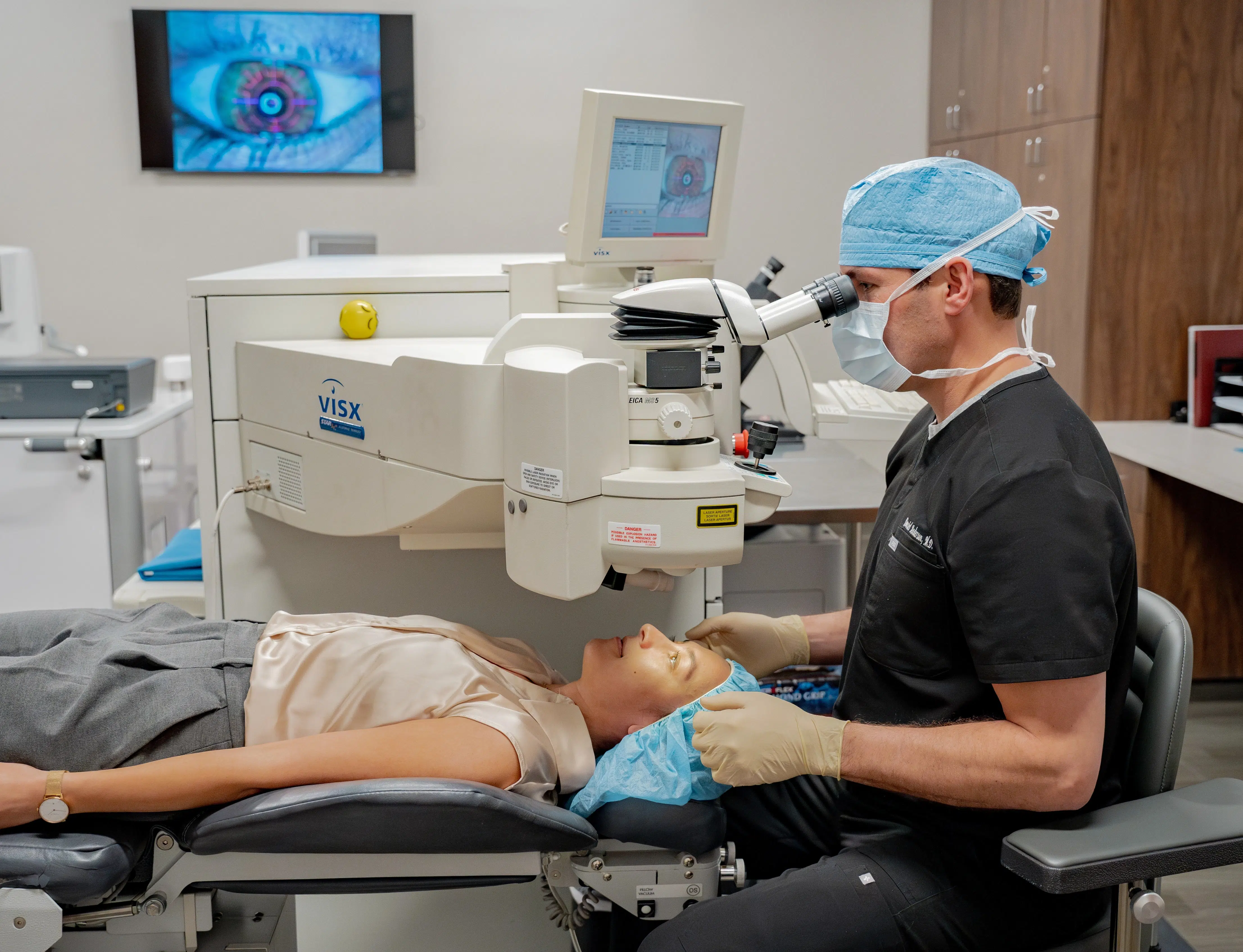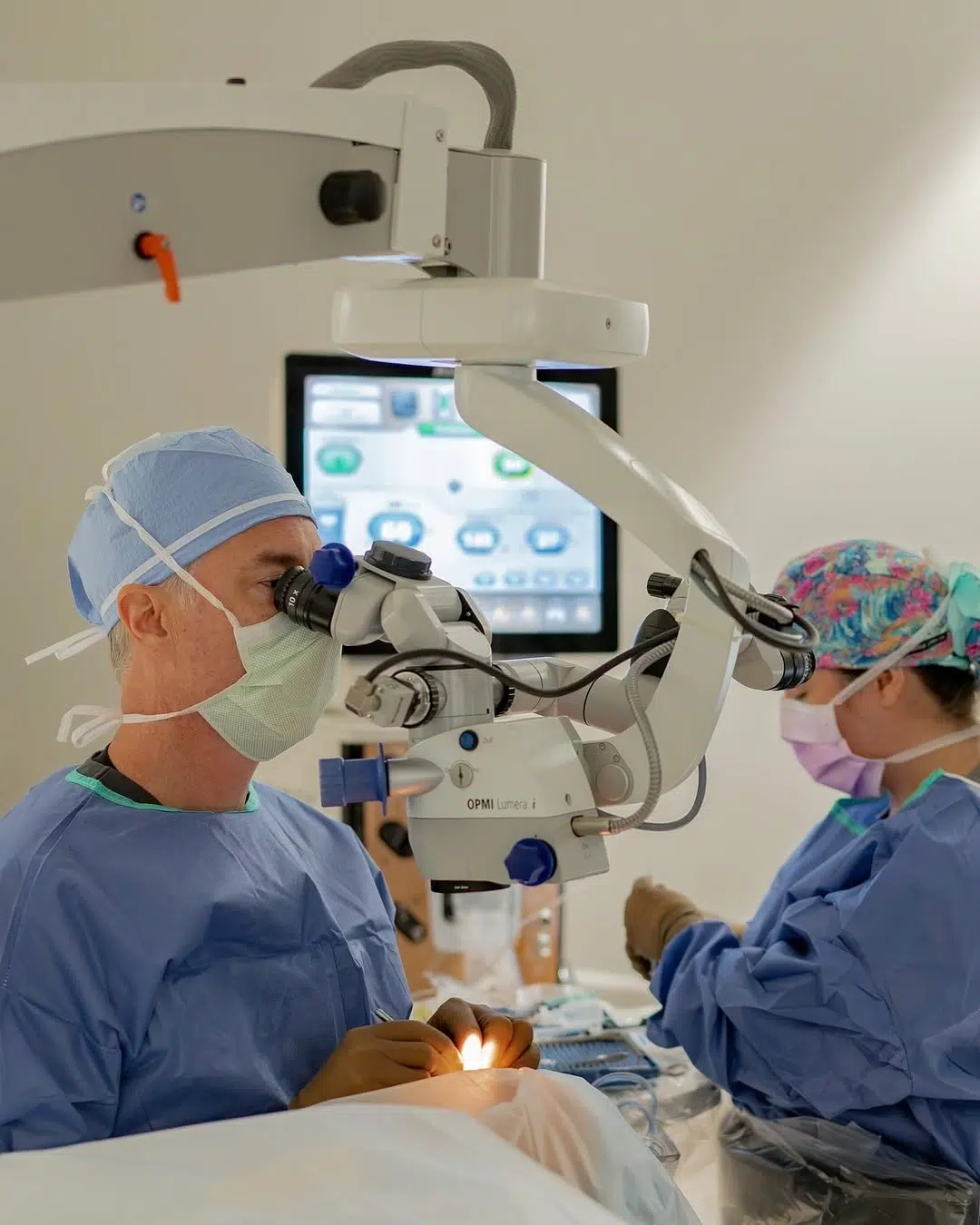Experience Clear Vision with PRK Eye Surgery in Houston
The Proven LASIK Alternative Offered by Houston’s Leading Surgeons. Trusted Eye Care for Over 60 Years
What Is PRK (Photorefractive Keratectomy)?
Considering laser vision correction but wondering about alternatives to LASIK? Photorefractive Keratectomy (PRK) offers outstanding visual results using advanced laser technology, without creating a corneal flap.
PRK is used to correct vision problems, including:
- Nearsightedness (Myopia): Difficulty seeing distant objects clearly.
- Farsightedness (Hyperopia): Difficulty seeing near objects clearly.
- Astigmatism: Blurry or distorted vision.
The PRK procedure uses an excimer laser to precisely reshape the surface of the cornea (the clear, front part of your eye). This reshaping allows light to focus accurately on the retina, improving your vision without glasses or contacts
On This Page
Am I a Good Candidate for PRK? (Candidacy)
PRK is an excellent vision correction option, but it’s not ideal for everyone. The best candidates typically:
- Are at Least 18 Years Old: (eyes generally stable).
- Have a Stable Vision Prescription: (prescription should not have changed significantly in the past year).
- Suffer from Myopia, Hyperopia, or Astigmatism within the treatable ranges.
- Have Good General Eye Health: Free from significant eye diseases (e.g., active infections, advanced glaucoma).
- Have Sufficient Corneal Thickness: The procedure requires sufficient corneal tissue.
- Are Not Ideal Candidates for LASIK:
- Thinner corneas
- Certain lifestyle or professional considerations (high-impact sports, military) might find PRK preferable.
- Have Realistic Expectations about the vision outcomes and recovery process.
During your free consultation at Berkeley Eye Center, our doctors will thoroughly evaluate your eyes, reviewing your history, visual acuity, corneal thickness, and overall eye health to determine if PRK is the safest and most effective option.

The PRK Procedure: Step-by-Step
The PRK procedure at Berkeley Eye Center involves these steps:
- Preparation: Numbing eye drops are administered to ensure your comfort.
- Epithelium Removal: The surgeon gently removes the cornea’s thin outer layer (epithelium).
- Laser Treatment: An advanced excimer laser precisely reshapes the exposed corneal surface, correcting your vision.
- Bandage Contact Lens: A clear, protective bandage contact lens is placed to aid comfort and healing during recovery.
The PRK Recovery Process: What to Expect
The PRK recovery process differs from LASIK:
PRK vs. LASIK: Key Differences
Both PRK and LASIK use excimer lasers, but key differences impact candidacy and recovery:
|
Feature |
PRK | |
|---|---|---|
|
Corneal Prep |
Corneal flap created (bladeless) |
Epithelium removed (no flap) |
|
Recovery Time |
Fast (often sharp vision within 24-48 hours, less initial discomfort) |
Slower (days to weeks for clear vision, more discomfort early on) |
|
Ideal Candidate |
Good corneal thickness; less emphasis on lifestyle limitations |
Thinner corneas, patients seeking flap-free, certain lifestyles |
|
Pros |
Fastest visual recovery. |
No flap complications, option for thinner corneas. |
|
Cons |
Small theoretical risk of flap complications. |
Longer initial recovery, more initial discomfort, potential for haze. |
Key Benefits & Considerations
PRK offers several benefits:
It’s important to understand that the recovery process can involve more initial discomfort (burning or light sensitivity) than LASIK. Your Berkeley Eye Center surgeon will fully discuss the pros and cons to help you decide if PRK is right for you.

Frequently Asked Questions About PRK
What is PRK?
PRK (Photorefractive Keratectomy) is a laser vision correction procedure. The excimer laser reshapes the surface of the cornea after the surface layer (epithelium) is gently removed.
How long does PRK recovery take?
Vision typically improves gradually over the first few weeks to months. You can usually drive within about a week. The epithelium has to regrow, causing initial fluctuations in vision.
Is PRK painful?
During the procedure, numbing drops are used, so you won’t feel pain. However, you may experience some discomfort, burning, and light sensitivity during the first few days after surgery.
Does insurance cover PRK?
Generally, PRK is considered an elective procedure and isn’t covered by insurance. Check your specific vision plan.
Is PRK better than LASIK?
Neither is universally “better.” The best choice depends on your individual eyes and lifestyle. Both offer excellent vision correction. Read more about the differences between PRK and LASIK.
What are the risks of PRK?
Risks are low, but can include initial discomfort, infection, corneal haze (usually temporary), glare, halos, or rarely, vision changes. Our surgeons take precautions and offer ongoing care to minimize risks.
Can I get PRK if I’ve had LASIK before?
Potentially. Each patient’s unique situation must be assessed.
What should I do to prepare for PRK?
Stop wearing contact lenses before your exam/surgery (your doctor will advise on the time frame), avoid eye makeup or lotions, and arrange for a ride home.
Take the Next Step for Clear Vision
If you’re exploring laser vision correction options and want to know if PRK is right for you, the first step is a comprehensive evaluation.
